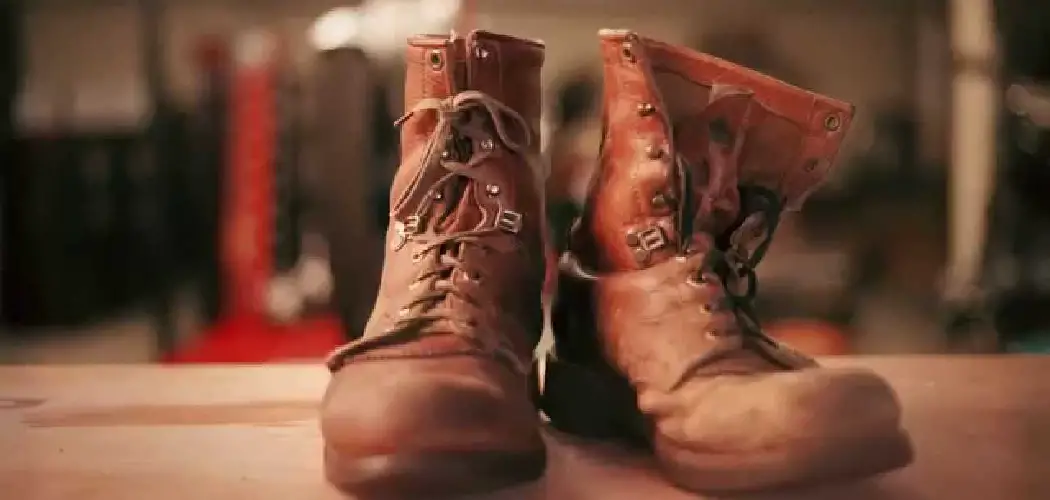There’s nothing worse than a brand new pair of boots that have been scuffed and scratched within the first few days of wearing them. If you’re not careful, they can quickly become an eyesore.
But don’t worry – there are a few ways to restore boots and make them look new. In this blog post, we’ll walk you through how to restore boots using home remedies and professional products. So read on to learn more.
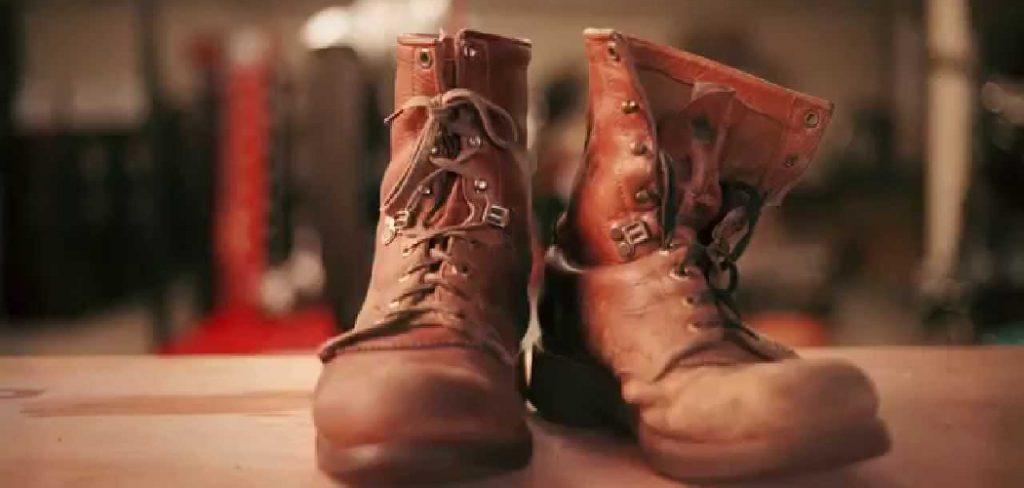
Summary: If you want to give your worn-out boots a new lease on life, you can use several methods and materials to restore them. Start by cleaning the boots with a damp cloth, and then use a suede brush (for suede boots) or wire brush (for leather boots) to remove any crusty dirt. If necessary, apply a leather conditioner or cream to the boots to keep the material soft and supple. To repair marks or tears, use a shoe repair kit or superglue.
Why Do Boots Get Scuffed?
Boots are made of tough material but are not immune to scuffs and scratches. The most common reason why boots get scuffed is from wear and tear. Walking on hard surfaces, kicking up gravel, or rubbing against rough edges can all lead to scuffs and scratches. Another reason why boots get scuffed is poor care and cleaning. If you don’t clean your boots regularly, dirt and grime can build up and lead to scuffs.
Why You Should Restore Your Boots
There are a few reasons why you should take the time to restore your boots, including:
Look Like New Again:
If your boots are starting to look worn and scuffed, restoring them can make them look new again. It’s a great way to extend the life of your boots and keep them looking their best.
Improved Performance:
Restoring your boots can also improve their performance. For example, if your boots are starting to feel stiff and uncomfortable, restoring them can help soften the material and make them more comfortable to wear.
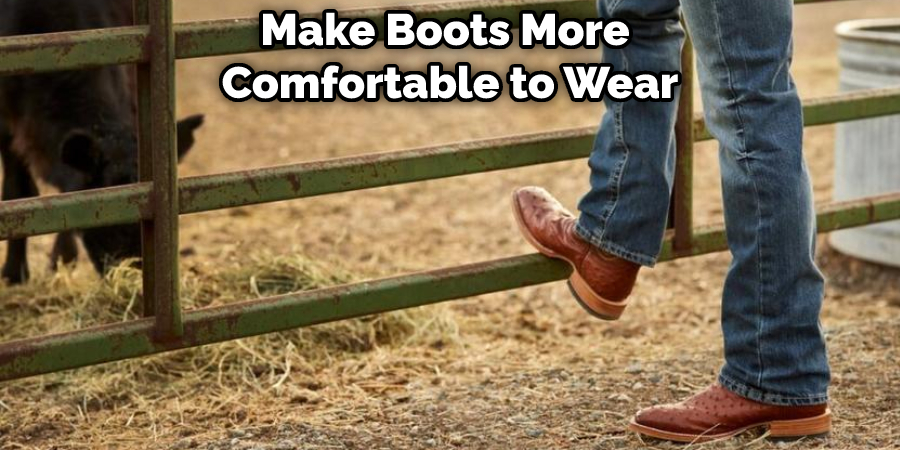
Protection:
Restoring your boots can also protect them from further damage. If you don’t restore scuffed boots, the material can become brittle and break down over if you don’t have time, which will shorten the life of your boots.
Increase Durability:
Restoring your boots can also increase their durability. If you regularly restore your boots, they will last longer and be able to withstand more wear and tear. Regular restoration is a must if you want your boots to last a lifetime.
Things You’ll Need
There are a few things you’ll need to restore your boots, including:
- A clean cloth
- White vinegar
- Water
- Baking soda
- A toothbrush
- A soft brush
- Baby oil
- Shoe polish
Here Are Some Effective Ways How to Restore Boots
1. Wipe Them Down With a Clean Cloth.
The first step in how to restore boots is to wipe them down with a clean cloth. This will remove any dirt or grime on the boots’ surface. Be sure to use a soft, lint-free cloth, so you don’t damage the material. You can use a mild soap and water solution if your boots are especially dirty.
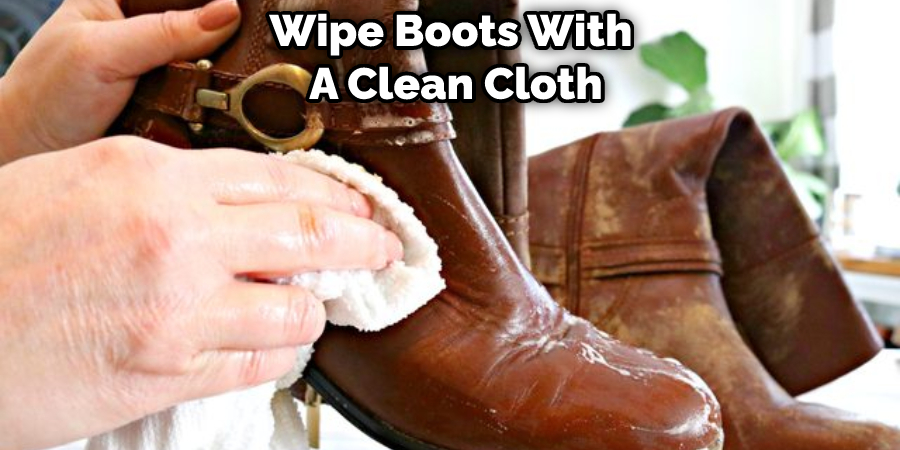
2. Mix White Vinegar and Water.
Mix equal parts white vinegar and water in a bowl. This solution will help remove any stains on your boots. To do this, dip a clean cloth into the mixture and rub it onto the stained areas of your boots. Let the solution sit for a few minutes before wiping it away with a clean cloth.
3. Make a Baking Soda Paste.
If your boots start to look dull, you can make a baking soda paste to help restore their shine. To do this, mix one tablespoon of baking soda with two tablespoons of water. Next, apply the paste to a clean cloth and rub it onto the boots in a circular motion. Let the paste sit for 10 minutes before wiping it away with a clean cloth.
4. Brush Them With a Toothbrush.
If your boots have small scuffs, you can use an old toothbrush to remove them. Dip the toothbrush into the white vinegar and water mixture (from step 2) and gently brush the scuffs. Be sure to use gentle circular motions, so you don’t damage the leather. You can also use this method to clean the dirt and debris from the grooves of your boots’ soles.
5. Use a Soft Brush.
If your boots are made of suede, you can use a soft brush to restore their nap. To do this, brush the boots in one direction. If you brush them back and forth, you risk damaging the suede. If your boots are made of leather, you can use a soft cloth to buff them.
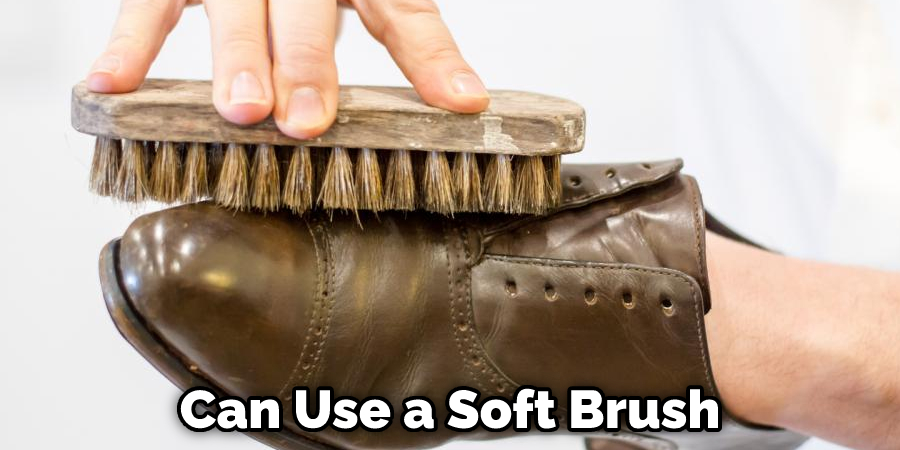
6. Use Baby Oil.
If your boots are starting to look dry, you can use baby oil to restore their moisture. Apply a small amount of baby oil to a clean cloth and rub it into the leather in a circular motion. You can also use a cotton ball soaked in baby oil. Allow the oil to soak into the leather for about 15 minutes, then wipe off any excess with a second clean cloth.
7. Use Shoe Polish.
If you want to add a bit of shine to your boots, you can use shoe polish. To do this, apply a small shoe polish to a clean cloth and then rub it into the boots in a circular motion. You can also use a shoe brush to work the polish into the boots. If you want a high shine, you can apply a second coat of polish. Allow the first coat to dry completely before applying the second coat.
8. Wax Them.
If you want to add a bit of water resistance to your boots, you can wax them. To do this, purchase a can of waterproofing wax and follow the instructions on the label. Usually, you’ll need to rub the wax into the leather in a circular motion and then let it dry. You can also add a bit of polish to your boots for extra shine.
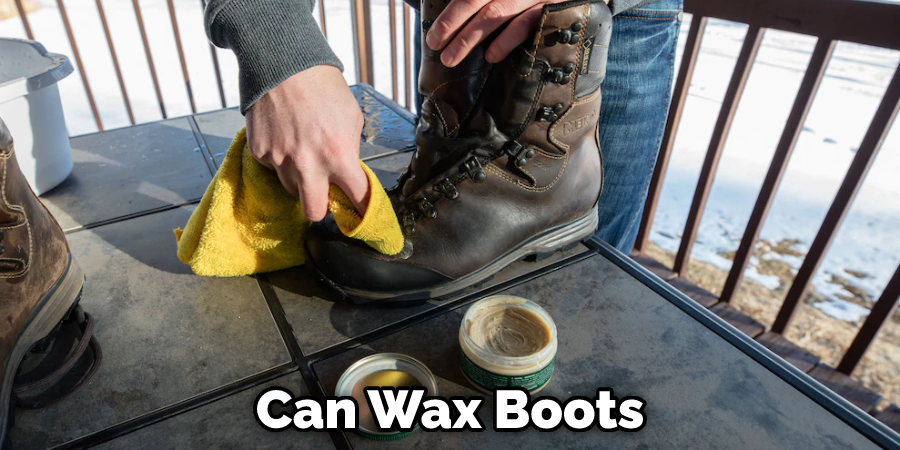
9. Use Mink Oil.
You can use mink oil to add a bit of softness to your boots. Simply apply a small amount of mink oil to a clean cloth and rub it into your boots in a circular motion. You can also use a mink oil conditioner to help keep your boots in good condition.
10. Use a Leather Cleaner.
If your boots are starting to look dull, you can use a leather cleaner to restore their shine. To do this, follow the directions on the leather cleaner bottle. Test the cleaner on a small area of the boot first to ensure that it won’t damage the leather.
11. Apply a Leather Conditioner.
After cleaning your boots, you’ll want to apply a leather conditioner. This will help keep the leather supple and prevent it from cracking. There are many different brands of leather conditioner on the market, so feel free to experiment until you find one that you like. If you’re unsure of what to look for, ask a salesperson at your local shoe store for help.
How to Prevent Boots from Getting Scuffed
1. Use a Shoehorn.
One of the best ways to prevent your boots from getting scuffed is to use a shoehorn. This will help you avoid having to jam your foot into the boot, which can cause scuffs. If you don’t have a shoehorn, you can use a rolled-up sock or t-shirt.
2. Wear Them with the Right Socks.
Wearing the right socks with your boots can also prevent scuffs. Avoid wearing socks that are too loose or too tight. Instead, choose a pair that fits snugly around your ankle and calf. This will create a barrier between your skin and the boot, which can help prevent scuffs.
3. Use a Nylon Stocking.
If you don’t have the right socks, you can use a nylon stocking as a temporary measure. First, cut the stocking so that it fits snugly around your ankle and calf, then put your boot over it. This will help prevent scuffs until you can get a better pair of socks.
4. Invest in Good Quality Boots.
One of the best ways to prevent scuffs is to invest in a good quality pair of boots. Look for boots made of durable materials like leather or suede. Also, make sure the boots have a good quality sole that will last long and resist scuffs.
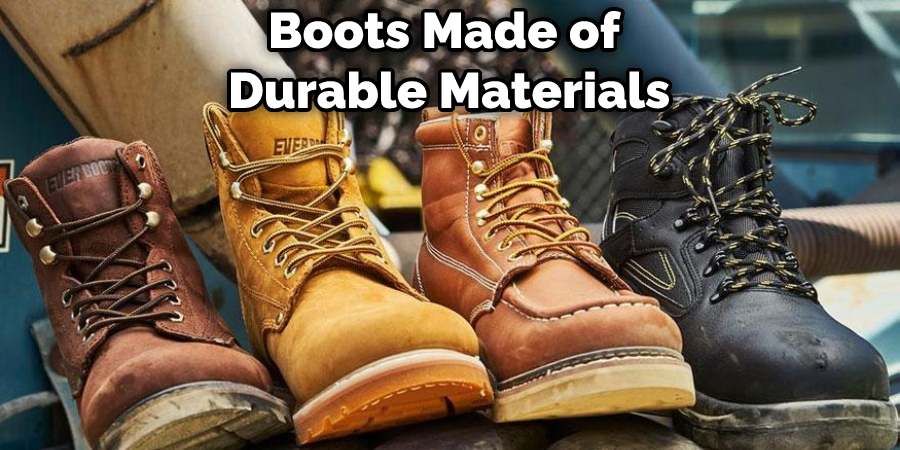
5. Use a Boot Protector.
Another way to keep your boots looking new is to use a boot protector. This is a clear or colored film that you apply to the surface of your boots. It will create a barrier between your boots and the outside world, which can help prevent scuffs. If you are worried about the film affecting the look of your boots, you can find clear versions that are almost invisible.
6. Be Careful When You Walk.
One of the best ways to prevent scuffs is to be careful when walking. Avoid walking on rough surfaces like gravel or concrete. If you must walk on these surfaces, make sure to step lightly. Also, be careful not to kick objects or drag your feet when you walk.
7. Clean Them Regularly.
Regular cleaning will also help keep your boots looking new. Use a soft cloth to wipe away dirt and debris after each wear. You can also use a shoe brush to remove any built-up dirt. Once a week, clean your boots with a mild soap and water solution. Allow them to air dry before wearing them again.
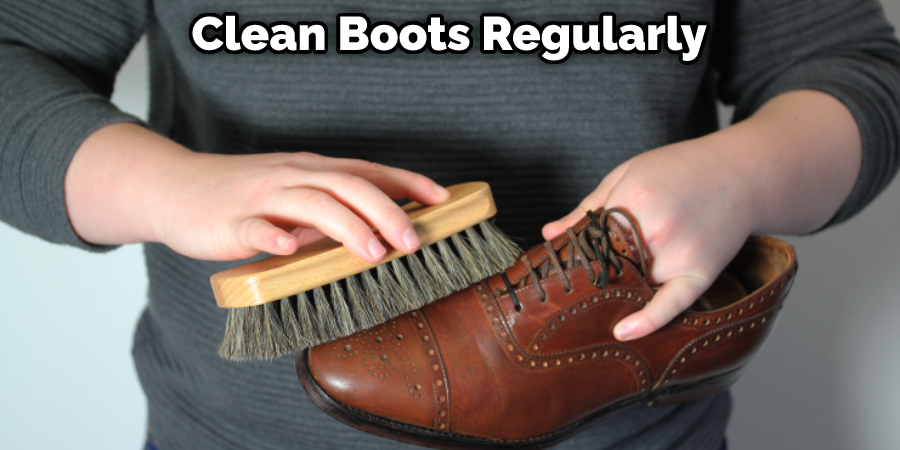
8. Store Them Properly.
If you’re not wearing your boots, store them properly. Please keep them in a cool, dry place away from direct sunlight. You can also stuff them with newspaper to help them keep their shape. Avoid storing them in plastic bags, as this can cause them to sweat and damage.
How Much Does It Cost to Restore Boots?
The cost of restoring boots will vary depending on the boot type and the damage’s extent. For example, simple cleaning and conditioning cost less than a full restoration. Therefore, you can expect to spend anywhere from $30 to $100 on boot restoration, depending on the service you need. If you’re unsure how much it will cost to restore your boots, you can always ask a professional for an estimate.
Frequently Asked Questions
Can Old Boots Be Restored?
Old boots can definitely be restored – but it will take some time and patience. The first step is to remove all the dirt, dust, and debris that has built up over the years. Next, you’ll need to dry them out completely. This can be done by airing them out in the sun or using a dehumidifier. Once they’re sufficiently dry, you’ll need to seal them with a protective coating. This will help to keep the leather from drying out and cracking. Finally, you’ll need to polish the boots to restore their original finish.
Can Old Hard Leather Be Restored?
Yes, hard leather can be restored with a bit of TLC. However, if you have any major damage or tears in the skin, it is best to get that area repaired by a professional. Otherwise, you run the risk of not only damaging your furniture further but also potentially contracting diseases from exposure to harmful bacteria and parasites.
What is the Best Product to Restore Leather?
When restoring leather, you may want to use a product that restores the full depth and thickness of the skin. This will help to prevent future damage or wear-and-tear while also giving your piece a more authentic look. Some good products that can do this include our Top 3 Picks – Repair Cream, Tanned Leather Conditioner, and Saddle Soap.
Make sure to test out each product before using it on your leather item in order to determine which is best for restoration purposes. Remember not to overload the area with too much moisture at once, as this could cause distress and hasten the deterioration process. Apply the product directly onto dry skin (<50% humidity) and leave it in place for several minutes before wiping off any excess with a clean cloth or sponge.
Is It Worth It to Restore Shoes?
The cost and time required will vary depending on the shoes that you are trying to restore. However, a general rule of thumb is that it can be worth it if your shoes are in poor condition or if they have been worn for an extended period of time.
When restoring shoes, there are a few important steps that need to be taken into account: cleaning, priming & protection (PP&P), stitching corrections/knots removal/replacing (SCRAPING), and finishing touches (FINAL SHOE SFEETCHES). Cleaning should include removing any debris from within the shoe such as dirt, dust mites, skin cells, etc. PP&P involves applying a sealant or coating to protect the new footwear from water damage and surface wear over time. SCRAPING removes stitches at various points along the shoe’s construction so that they do not come undone in future wears; this helps reduce excess friction which could cause injury.
Conclusion
This article has shown you How to Restore Boots. Boots are an important part of any wardrobe, but they can also be expensive to replace. However, following a few simple steps can help your boots last longer and keep them looking good as new. If you have any questions, please feel free to leave them in the comments below.

